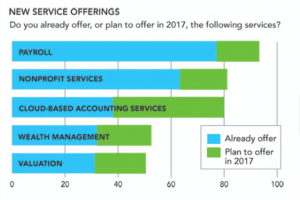
geralt / Pixabay
No matter how good an entrepreneur is at planning out their growth steps, sometimes life throws a curveball. A family illness or death can derail an owner’s focus for months. An unexpected economic downturn such as the 2009 credit debacle can change people’s buying patterns overnight. A launch that was planned meticulously fails, and with that failure a significant financial windfall goes up in smoke. Or, as we saw in 2020, a global pandemic can put the entire world into a tailspin, shutting down in-person experiences and multiple industries for over a year.
It’s in the moments when everything you were counting on goes haywire that you must count on your ability to change directions – quickly.
A valuable superpower that lies dormant in way too many entrepreneurs is to adapt quickly to changing environments. Even with a rock-solid plan, you can’t anticipate every variable. If a business owner clings to a plan that is no longer working, they’ll find themselves sinking with the Titanic.
That’s where The 80% Plan comes in handy.
An 80% Plan is a way of planning that dissolves “planning paralysis.” Planning paralysis is when your mind gets hyper focused on getting every task planned for but you don’t know what every task is so you never move the project forward! Its a lot like “analysis paralysis” which is a common reason business owners don’t achieve their goals.
The 80% Plan also sets up the right mental framework to anticipate the “on the fly” flexibility that most complex projects require: no matter how detailed your plan, you can only plan for 80% of possible situations. 20% will always have to get figured out once the situation presents itself.
Most product promotions have to be modified mid-stream to course correct the messaging or change marketing tactics if the original strategy isn’t producing desired results. Last year one of my client’s launched her new offering just as our U.S. Capital was stormed. Couldn’t plan for that! We had to quickly change her approach to fill her program.
Many live events (even if they are virtual) can have unexpected challenges that have to be navigated mid-stream – and you’d never be able to plan for it. Once I was hosting a live virtual 3 day event and on day 3, the power went out for four hours. I certainly burned through my data plan that day (but I always have my iPad charged and ready, just in case.)
Even a routine webinar that you’ve hosted a million times can go awry and require a shift in strategy to handle a technical snafu. Not too long ago I was hosting a live interview series with women all over the world — and three of these leaders couldn’t access the technology — and I discovered it while we were live. So I interviewed them through the chat feature instead.
Even a simple podcast launch can hit bumps and mess up your timing. One of my clients hit a snag when her graphics designer fell behind and she had to delay her timeline. Not a deal breaker, but she was super upset by the delay.
The bottom line…you can’t plan for every situation so it’s better to go in with an 80% Plan to make progress instead of waiting for the perfect plan.
How to Set Up Your 80% Plan
Identify your primary “milestones.”
When I’m helping a client map out their 80% plan for a podcast or program launch, we start with what we do know must happen. What are the key elements or “big chunks”? For instance, if you are hosting a party, you know you must:
- Make a guest list
- Send out invites
- Get party decorations and supplies
- Host the party!
Inside each of those elements are a bunch of moving parts. You might know some of the steps but not all of them. Don’t let that stall your progress. Start with what you do know, then fill in the gaps along the way. Even if things don’t go well, you will have learned what to do differently the next time. Let go of the need for perfection and replace it with an appreciation for progress.

- 742680 / Pixabay
Plan for the Un-plannable
You can’t plan for everything, but if you know going in that you will have some things happen outside of your control, you’ll be better prepared. Back in my Fortune 500 days, I was a trained project manager for multi-million dollar Public Safety technology (one of the products was the 9-1-1- dispatch centers every city has.) We used very complex, detailed project plans to account for every potential scenario. Every project installation invariably had a situation we couldn’t plan for. But we knew that going in and had what’s often referred to as a contingency plan. What do we do when a situation arises that we didn’t plan for?
Here are a few ways to plan for the un-plannable:
- Set aside a contingency budget for unplanned expenses. If you’ve ever had a big wedding, you know how quickly the budgeted funds disappear on “have to haves.”
- Use “float time.” Don’t plan out every second of your day. Create space for unexpected situations to get resolved. If you book in white space in your calendar, you’ll be less frazzled and able to navigate uncharted waters quickly.
- Double the deadline. Everything takes longer than expected, especially when you are outsourcing or delegating pieces of the project. Give your subcontractors early deadlines so you don’t bump up against your go-live dates. Don’t get trapped in Superhero Syndrome and give yourself unrealistic deadlines that set you up for failure.
- Adopt the 80% Plan mindset so you don’t get overly frustrated when new situations crop up that you didn’t plan on. Just keep telling yourself to flow like water around the boulders in your way.
Level up Your Resourcefulness
When you are taking on a big project and you don’t have complete clarity, it’s tempting to hold back until you do. You won’t every get full clarity. Even if you hire a coach or a consultant to help you map out your plan, you won’t be able to map out every single step.
Instead of putting on the breaks until clarity arrives, level up your resourcefulness. Shift your internal dialogue from “I don’t know what might happen and I can’t afford to fail” to “I’ll map out what I can and figure the rest out on the fly.”
Resourceful people don’t have to see the whole picture, they just need to be pointed in the right direction and feel confident they can handle anything that comes their way. Surround yourself with other capable, confident people, so you have a network of resourceful people to tap into for guidance along the way.

- Tumisu / Pixabay
Shift Your Mindset
The business owner’s ability to pull off bigger goals, and succeed despite uncertainty and industry change starts with how you think. Knowing that you’ll start this process with 80% of it figured out, is part one. Part two is directing your thought patterns with every unexpected hiccup or breakdown from:
- Frustration that it’s not working to this is a learning process.
- Letting a lack of clarity stop you to getting enough clarity to get into action.
- A fear of making a mistake or failing to a willingness to move your goals forward and “learn” how to do it better next time.
- Feeling overwhelmed with a lot of moving parts to isolating the next thing to do, and just doing that.
- Worrying that you might not be capable to a willingness to tap into your coach, your colleagues and a rockstar team to balance out your weak areas.
When people are in fear about the “unknown” they tend to constrict and put the brakes on. When you constrict, it might make you feel like you have control over your fear but it ultimately keeps you in the safety zone, and your lingering goals will haunt you for weeks (or years!)
Those that take bold leaps and continue to invest in achieving bigger goals – even if they look different than planned – will have a thriving, viable business even during the tough times.
The 80% Plan is just as much a mindset shift as it is a planning strategy. During uncertain times, the most important factor to remember is, everything can get figured out if you stay in a resourceful frame of mind.
If you tend to struggle with Analysis Paralysis and your important business growth goals are on hold, check out Amplify Your Success Podcast episode 102, How to Overcome Analysis Paralysis with the 80% Plan (listen in here.)
Business & Finance Articles on Business 2 Community
(43)









